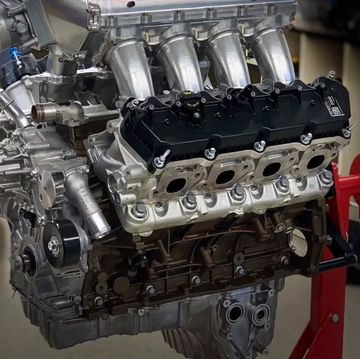The more we learn about the Takata airbag scandal, the worse things look. And the latest findings are unconscionably grim: Internal emails show Takata engineers discussing how they would manipulate data to downplay potentially fatal failures with a horrifying nonchalance.
The New York Times obtained internal emails sent by Takata engineers during the period when the auto parts supplier was manufacturing the defective airbag inflators at the center of the deadly fiasco. In multiple exchanges, Takata employees blithely acknowledge plans to tinker with the way that negative testing data will be presented to customers—namely, the automakers that used Takata airbag inflators.
"Happy Manipulating!!!" an airbag engineer, Bob Schubert, wrote in one email dated July 6, 2006, in a reference to results of airbag tests. In another, he wrote of changing the colors or lines in a graphic "to divert attention" from the test results and "to try to dress it up.
Schubert is a familiar name in the unfolding Takata scandal. In November, it was revealed that Schubert had tried to blow the whistle on Takata's data-fudging back in 2005, writing in a memo to a fellow employee that he was concerned with how Takata was "prettying up" the data, saying that "the practice has gone beyond all reasonable bounds and now most likely constitutes fraud."
By 2006, apparently, Schubert had changed his tune—apparently urging his colleagues via email to continue manipulating testing data. The exchange above, NYT reports, had to do with testing data that showed Takata airbag inflators misbehaving under high-temperature testing, a condition that Takata blamed for the deadly shrapnel-shooting ruptures in many accidents involving the defect. As NYT explains:
In response to Mr. Schubert's invitation — "Happy Manipulating!!!" — a colleague appeared to be more cautious. "If you think I'm going to manipulate, you really should try and get to know me better," he insisted. Yet he offered: "I would be willing to deviate for running slightly high" in tests at higher temperatures.
"Hey, I manipulated," Mr. Schubert responded. The objective, he said, was to help disguise that some of the inflaters performed differently from the rest — a dynamic referred to as "bimodal distribution."
"I showed all the data together, which helped disguise the bimodal distribution," Mr. Schubert wrote. "Nothing wrong with that. All the data is there. Every piece," he added. But then he suggested using "thick and thin lines to try and dress it up, or changing colors to divert attention."
In a statement to NYT, Takata said the emails had to do with the formatting of a presentation, and no doctoring data. And, to be fair, it's hard to read the intended tone of an email. Schubert's previous attempts to fight against the data manipulation were met with indifference—he was told that such conduct was "the way we do business in Japan. It's possible, if charitable, to read Schubert's tone as one of exasperation. But it's still grim to read, particularly knowing that the defective airbag inflators in question have been linked to eight deaths, more than 100 serious injuries, and the recalls of nearly 20 million vehicles worldwide.
Then again, given that Takata may have known about the problem with its defective airbags as far back as 2000, and may have actively worked to destroy data predicting the problem back in 2004, perhaps it shouldn't be surprising that this was business as usual at Takata.

Bob Sorokanich previously served as deputy editor of Road & Track Magazine. He is based in New York City.













